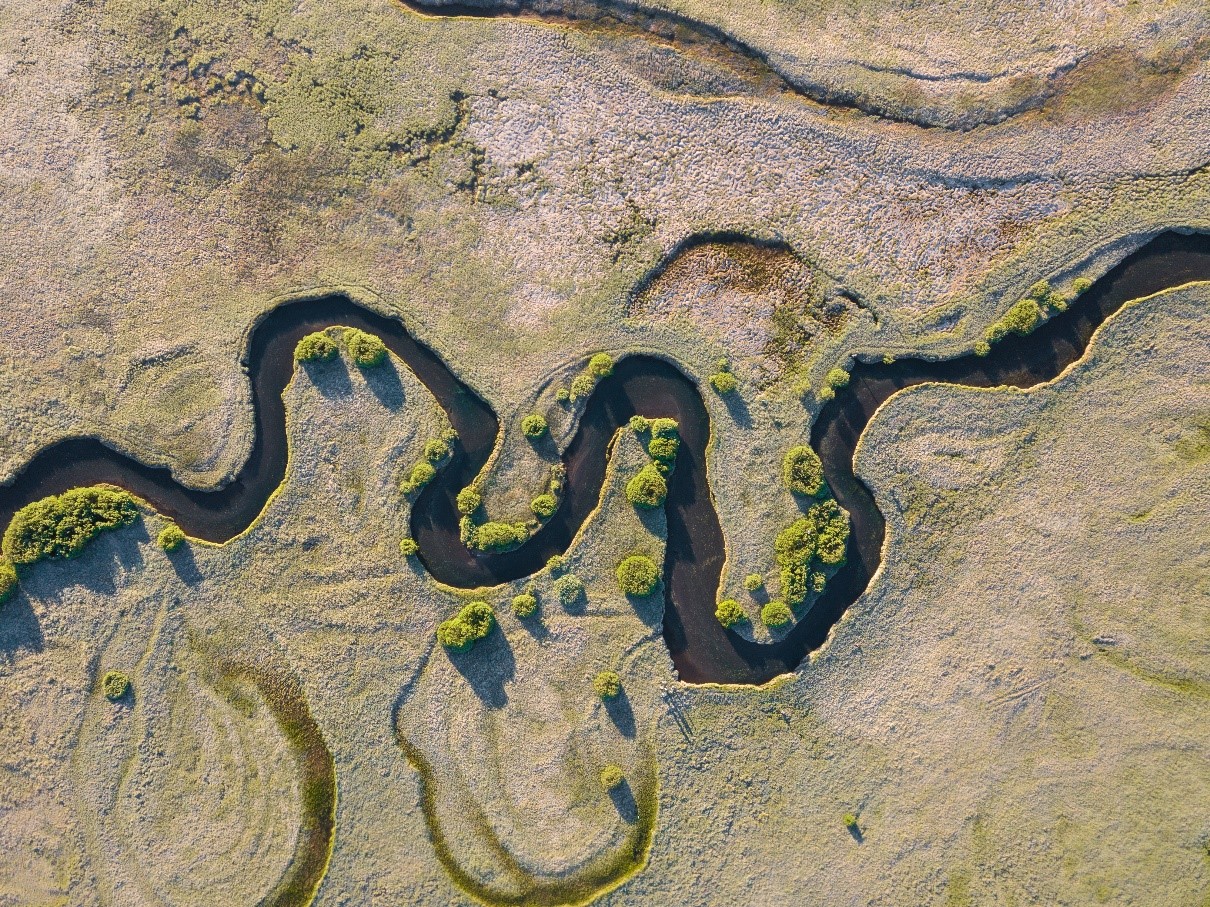Unraveling the Mysteries of Meandering River Patterns: Insights from Earth and Mars
Scientists investigate the sinuosity patterns of lowland meandering rivers, which could help understand past and future river behavior on both Earth and Mars.
Research published online in Nature Geoscience in August 2023

Meandering rivers form wave-like channels that are quantified using a parameter called river sinuosity. River sinuosity patterns can be used to gain valuable insights into the past and future behavior of lowland meandering rivers.
Photo Credits: Michal Balada from Shutterstock.
Lowland rivers, both on Earth and distant planets like Mars, are key players in sculpting landscapes. These meandering waterways form sinuous, wave-like channels that evolve and migrate over time. Geoscientists use a parameter called “river sinuosity,” defined as the ratio of the length following the river channel to the straight distance it flows down a valley, to quantify these wave-like patterns.
River sinuosity, a fundamental measurement recorded in river sediments, can be used to inform decisions on river restoration, infrastructure design, and land management as well as to understand the hydrological history of rivers on Earth and Mars. However, the factors affecting the changes in sinuosity over the course of the river and with time are not fully clear. This results in a poor understanding of channel migration, making it difficult to predict how rivers will behave in future due to varying environmental conditions.
Now, a team of scientists led by Associate Professor Wonsuck Kim from Yonsei University in Korea has examined the spatial sinuosity of 21 large meandering lowland rivers on Earth and six ancient Martian river systems. The team compiled historical maps, aerial photographs, and satellite images of rivers on Earth and studied them to retrace their channel paths before human modifications. For Martian rivers, the team approximated the paths of ancient rivers by studying the sandstone ridges deposited by the rivers, detected using remote sensing data.
The team found that, on both Earth and Mars, there are essentially two types of rivers with distinct sinuosity patterns: variable-sinuosity rivers, whose sinuosity increases substantially downstream towards the coast, and constant-sinuosity rivers, whose sinuosity remains constant. Further, a numerical model revealed that as rivers age, their sinuosity first increases, hits a peak, and then levels off at a lower value.
Dr. Kim points out: “These findings led us to hypothesize that the sinuosity patterns may be linked to the river's relative age, defined by the lateral migration rate.” The team confirmed this hypothesis by comparing the river sinuosities obtained from the numerical model to those measured from historical data for 11 rivers on Earth. “Furthermore, rivers that migrate rapidly age quicker and can attain a steady state earlier and, consequently, show constant sinuosity. Conversely, slower-migrating rivers are still immature and exhibit variable sinuosity,” explains Dr. Kim.
Notably, constant-sinuosity rivers experience more variable flow discharge rates, implying a heightened risk of channel migration. This suggests that lowland rivers worldwide are on a trajectory towards becoming constant-sinuosity rivers, with an increased risk of floods, a threat that could be further exacerbated by global warming.
This study thus provides valuable insights into the relationship between flood variability and river patterns, shedding light on how rivers will respond to climate change and the duration of the hydrological cycle, not just on Earth but also on Mars.
Title of original article: Lowland river sinuosity on Earth and Mars set by the pace of meandering and avulsion
DOI: https://doi.org/10.1038/s41561-023-01231-1
Journal: Nature Geoscience
Contact corresponding author: Prof. Wonsuck Kim delta@yonsei.ac.kr
Recommended Articles
Professor Byeong-Su Kim
New study demonstrates that “deformable” electronics are not a stretch
Professor Yeonjin Yi